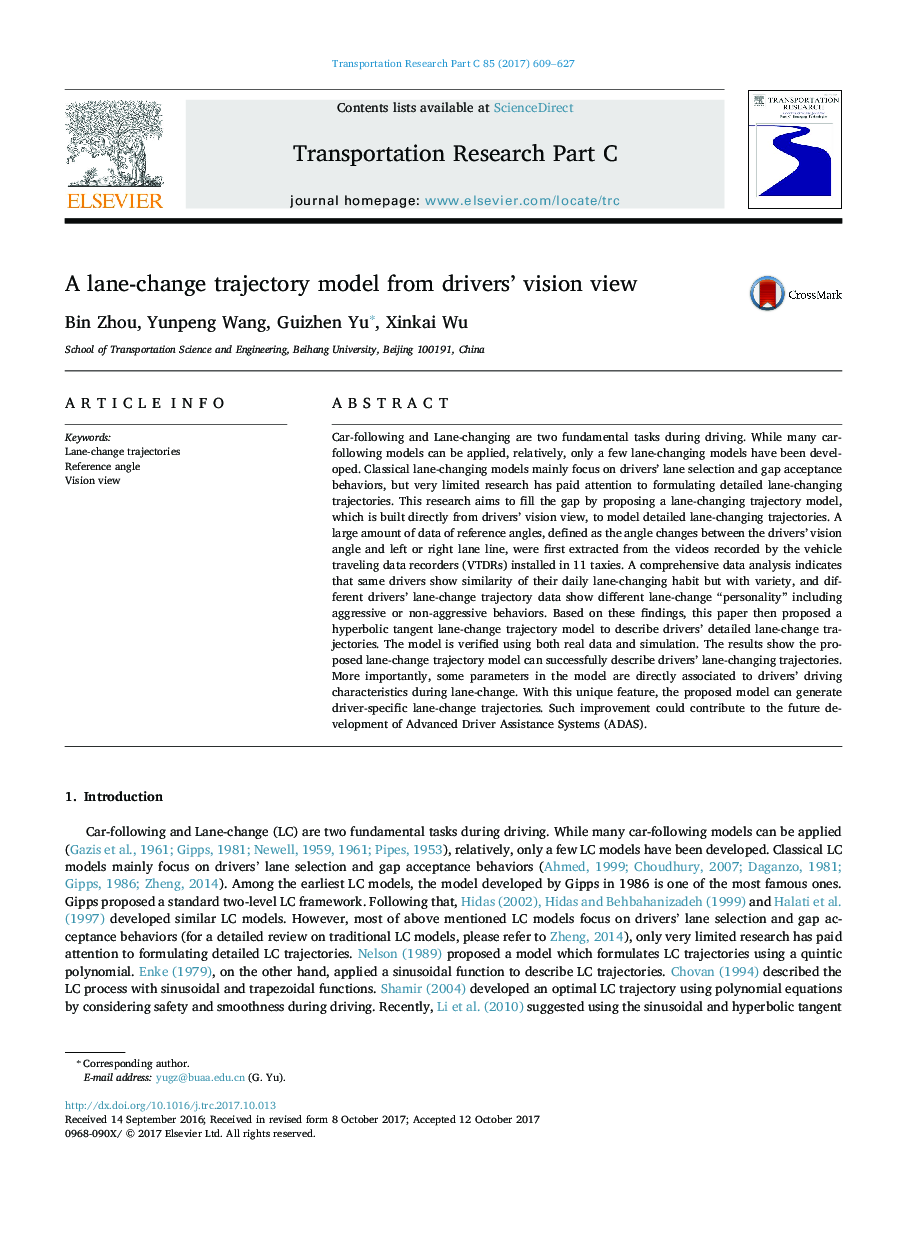| Article ID | Journal | Published Year | Pages | File Type |
|---|---|---|---|---|
| 6936315 | Transportation Research Part C: Emerging Technologies | 2017 | 19 Pages |
Abstract
Car-following and Lane-changing are two fundamental tasks during driving. While many car-following models can be applied, relatively, only a few lane-changing models have been developed. Classical lane-changing models mainly focus on drivers' lane selection and gap acceptance behaviors, but very limited research has paid attention to formulating detailed lane-changing trajectories. This research aims to fill the gap by proposing a lane-changing trajectory model, which is built directly from drivers' vision view, to model detailed lane-changing trajectories. A large amount of data of reference angles, defined as the angle changes between the drivers' vision angle and left or right lane line, were first extracted from the videos recorded by the vehicle traveling data recorders (VTDRs) installed in 11 taxies. A comprehensive data analysis indicates that same drivers show similarity of their daily lane-changing habit but with variety, and different drivers' lane-change trajectory data show different lane-change “personality” including aggressive or non-aggressive behaviors. Based on these findings, this paper then proposed a hyperbolic tangent lane-change trajectory model to describe drivers' detailed lane-change trajectories. The model is verified using both real data and simulation. The results show the proposed lane-change trajectory model can successfully describe drivers' lane-changing trajectories. More importantly, some parameters in the model are directly associated to drivers' driving characteristics during lane-change. With this unique feature, the proposed model can generate driver-specific lane-change trajectories. Such improvement could contribute to the future development of Advanced Driver Assistance Systems (ADAS).
Related Topics
Physical Sciences and Engineering
Computer Science
Computer Science Applications
Authors
Bin Zhou, Yunpeng Wang, Guizhen Yu, Xinkai Wu,
